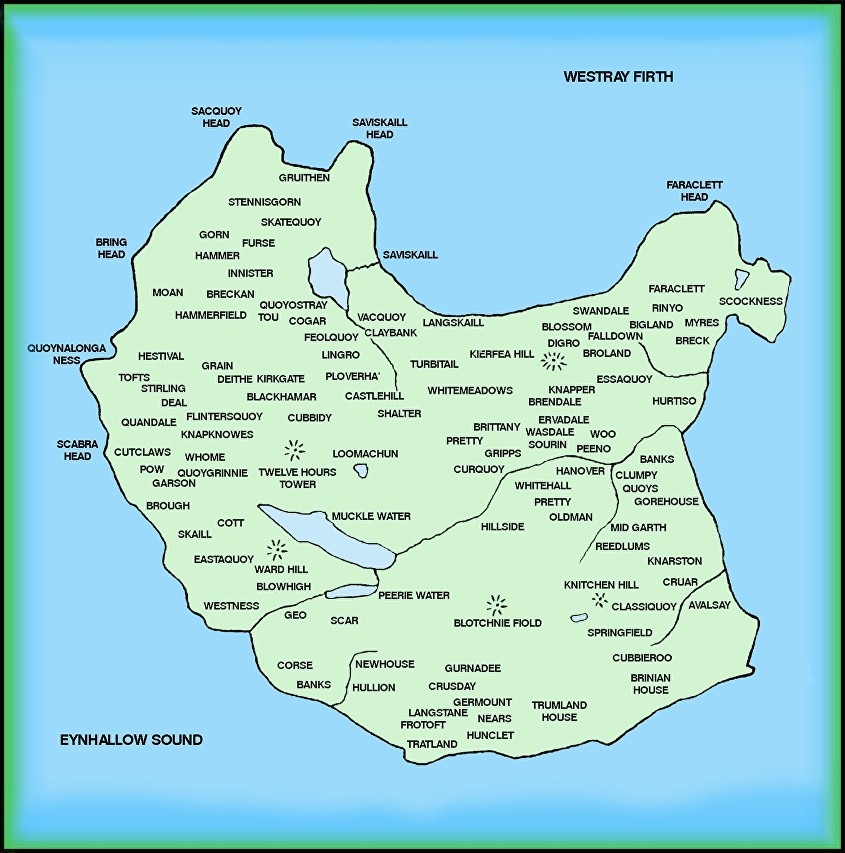Frotoft c1885
Frotoft Map
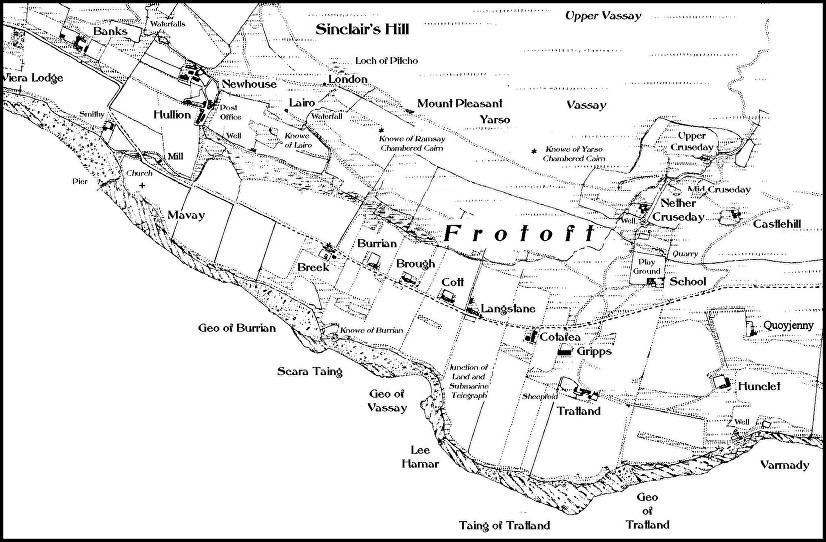

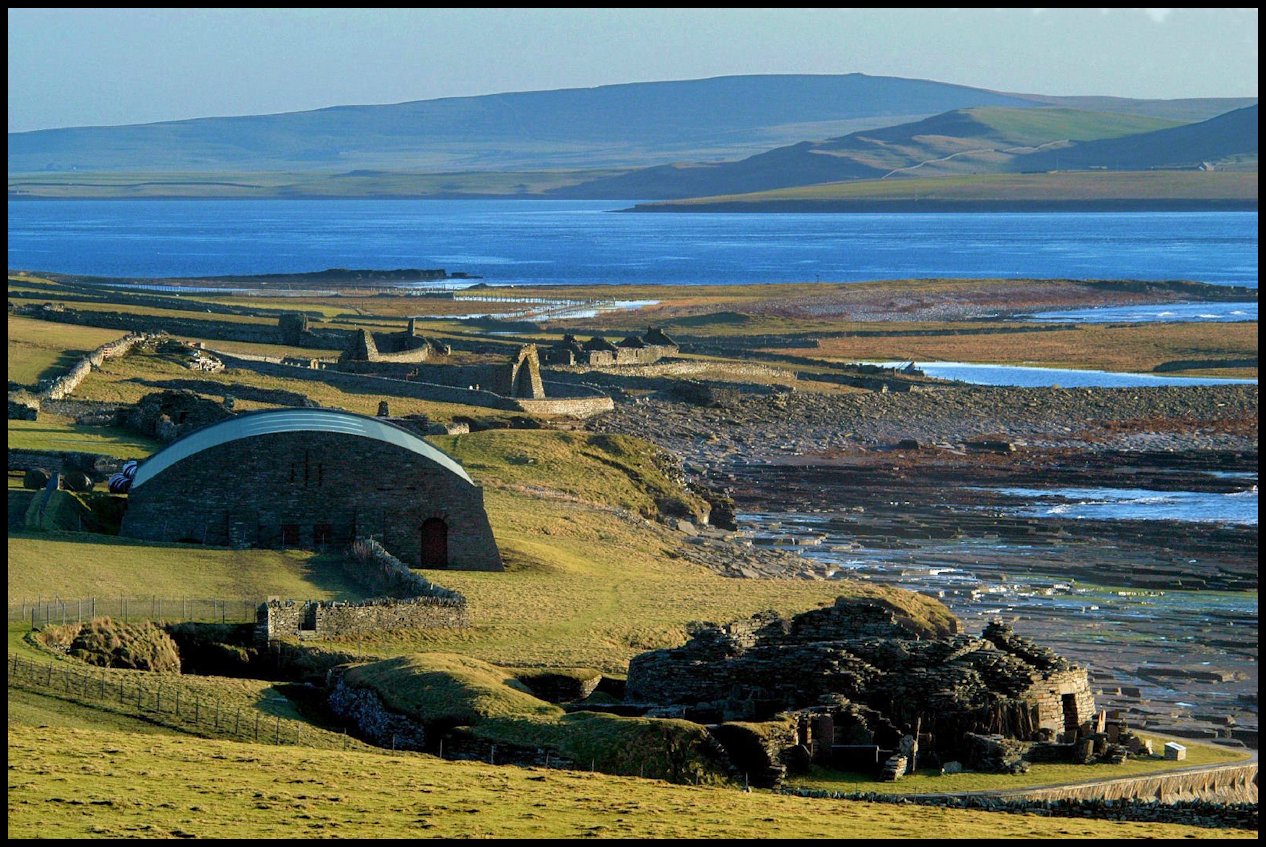
Rousay abounds in prehistoric sites of archaeological interest, with over 100 recorded so far. It is likely that some have been lost forever by farming operations while others lie beneath the soil still hidden from sight. Less than a third of those on record have been examined through either complete or partial excavation. The variety of structures found include brochs, burial cairns, standing stones, Norse burial cists, earth-houses, burnt mounds or knowes, and Celtic chapels. The two best known and most visited of Rousay’s ancient monuments stand close to of each other on the Westside shoreline. They are the Midhowe Broch and the Midhowe Stalled Cairn.
Constructed and used sometime between 200BC and 200AD, on first glance the broch at Midhowe would appear to have been built with defence in mind. Standing on a promontory formed by two geos, the broch is protected on one side by the sea and on the landward side by a stone rampart and ditch. This massive rampart is built in an arc between the two geos and effectively cuts the site off from the land.
Although there is no doubt that these outward defences would have looked impressive in their heyday, it may be that they were merely built for dramatic effect – the southern end of the rampart stops short of the geo and therefore leaves a ledge on the rock face by which a “visitor” could have easily access the promontory.
Like the Broch of Gurness on the Mainland coast almost opposite, Midhowe was surrounded by a group of external buildings but these were probably from a much later date when the need for defence was not as important. Coastal erosion, a problem for all shore sites such as Midhowe, has greatly damaged the remains of these outhouses
The remains of the broch’s circular wall stand to a height of approximately four metres and within the structure the general layout of the ground floor has been remarkably well-preserved.
Large slabs of local flagstone were used to divide the interior (diameter 9.6 metres) into two smaller, semi-circular rooms that were then further divided into smaller cells each with its own hearth and water-tank. Water was supplied from a spring that flowed up through a crack in the rocks and during the excavations, it was written that the main storage tank retained water which: “remained clear and drinkable all the years the work of excavation was going on.”
Midhowe’s broch structure is interesting in that it had a ground floor gallery built into the walls and as such differs from the normal solid walled brochs found in the islands.
This hollow base was probably not a good idea because at some point during its occupation, the broch’s gallery had to be blocked and filled in when the walls threatened to collapse. A projecting ledge, about three metres (11 feet) up would have at one time supported a timber first floor.
Perhaps the most interesting thing about Midhowe is the artefacts found within during excavation. The majority of these were the normal domestic items as you would expect to find on such a site – tools, whetstones, quern-stones etc. However, the Midhowe Broch yielded a few surprises as well. Among the items uncovered were the remains of a bronze ladle and some shards of pottery. These items had a definite Roman origin and as Orkney was well away from the areas of Roman control, they must either have been acquired as gifts or through trading or raiding excursions south.
The discovery of bronze jewellery on site also hints at the wealth and status of the family unit that lived at Midhowe. Archaeological evidence indicates that at some time a bronze-worker was based at the site but the small quantity of debris uncovered may simply mean that this craftsman was a travelling artisan.
The broch, a fortified and protected structure, was built as a place that could be retreated to in times of danger. It was excavated in the early 1930s and it was at that time also that the protective seawall was constructed in front of it.
Built by local stonemason Stanley Gibson, with assistance from Peemo Smith and Willie Grieve, this semi-circular seawall is a remarkable structure of five-inch thick slabs of rock set on edge on the rocky foreshore like giant books on a shelf. It slopes inwards for most of its height and outwards for the topmost two feet. Both the broch itself and this seawall rampart, built to protect it from the ferocity of the heavy seas that strike this side of the island, bear witness to the skill and craftsmanship of Orkney stonemasons working on the same site 2,500 years apart.
A stone’s throw from the broch is the stalled cairn, a burial place dating back about 5,000 years to the time of the Stone Age people. When it was excavated in the early 1930s it was found to be a building over 100 feet long and over 40 feet in width. The walls are a massive 18 feet thick leaving the interior as a long narrow chamber only a little over seven feet wide and varying in height from four to seven feet.
Down each side of a narrow central passage the chamber is divided into 12 compartments by flag-stones set on edge, giving an appearance very similar to that of a cow byre. It was in these compartments or stalls that the remains of 25 bodies were found, all on one side of the passageway. The bones of some animals and birds were also found.
This stalled cairn was considered so important a find that a stone building with overhead lighting and an overhead viewing gangway was erected over it to protect it from further decline.
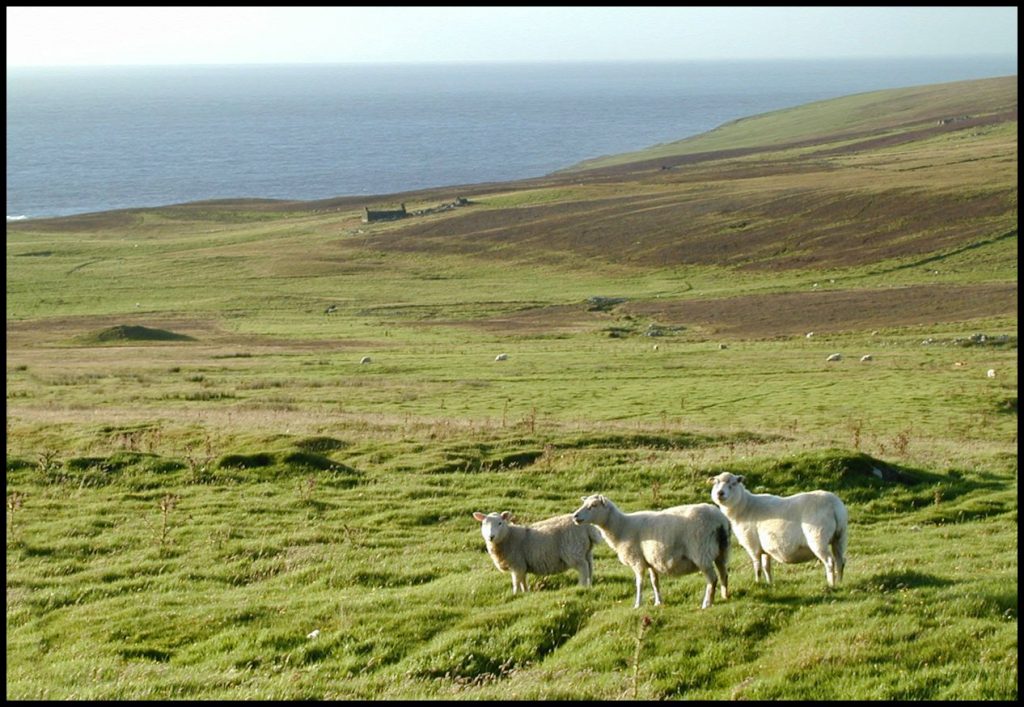
Quandale and Westness in Rousay were the only places in Orkney to suffer major clearances, firstly in 1845 and again between 1855 and 1859. Quandale was renowned for being one of the best corn-growing areas in the Northern Isles, but the laird, George William Traill, thought that sheep would be more profitable.

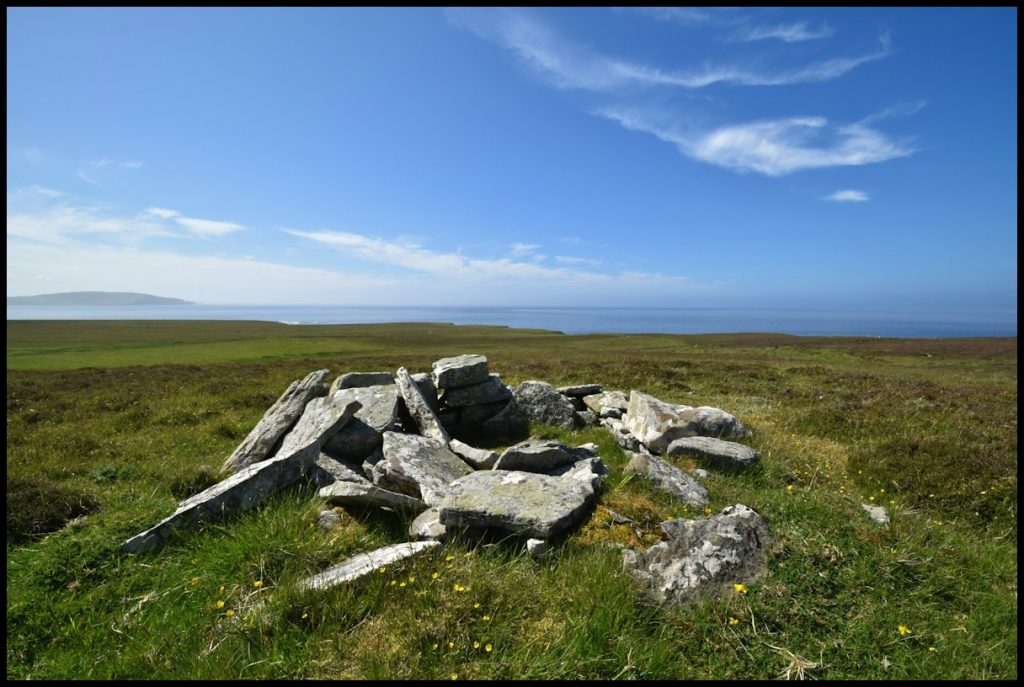
After the harvest of 1845 he evicted the 215 people and destroyed their farmsteads as part of the modernisation of his Westness estate. Some crofters were found dwellings else-where in Rousay, some became landless labourers, while others left the island.
Traill’s successor was General Sir Frederick William Traill Burroughs. He created such difficulties for the island’s crofters that he gained the reputation as the worst landlord in Orkney and was known as the ‘Little General.’
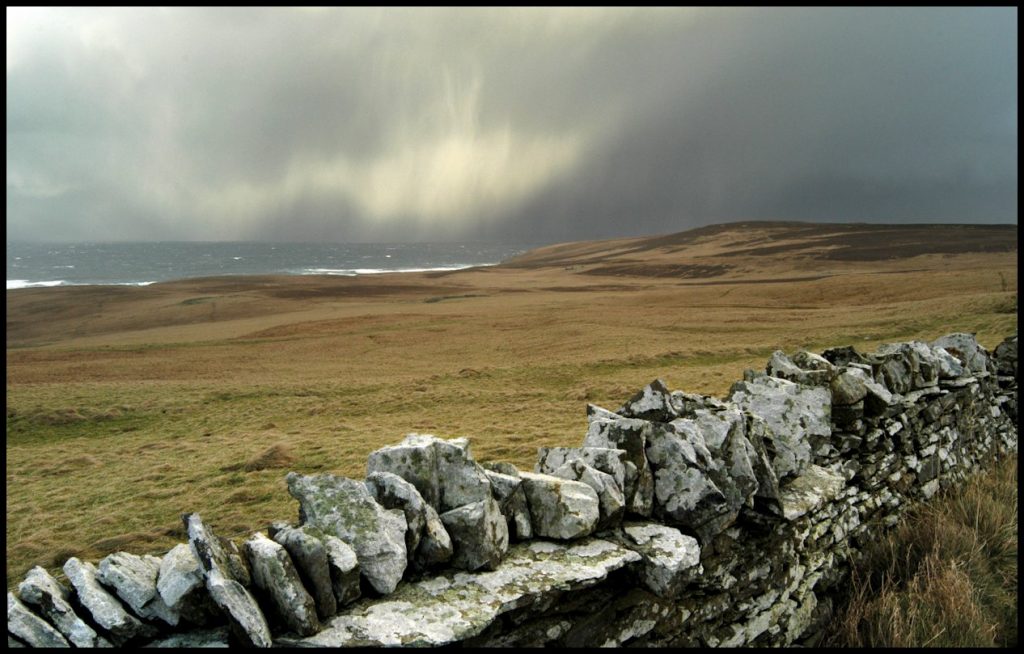
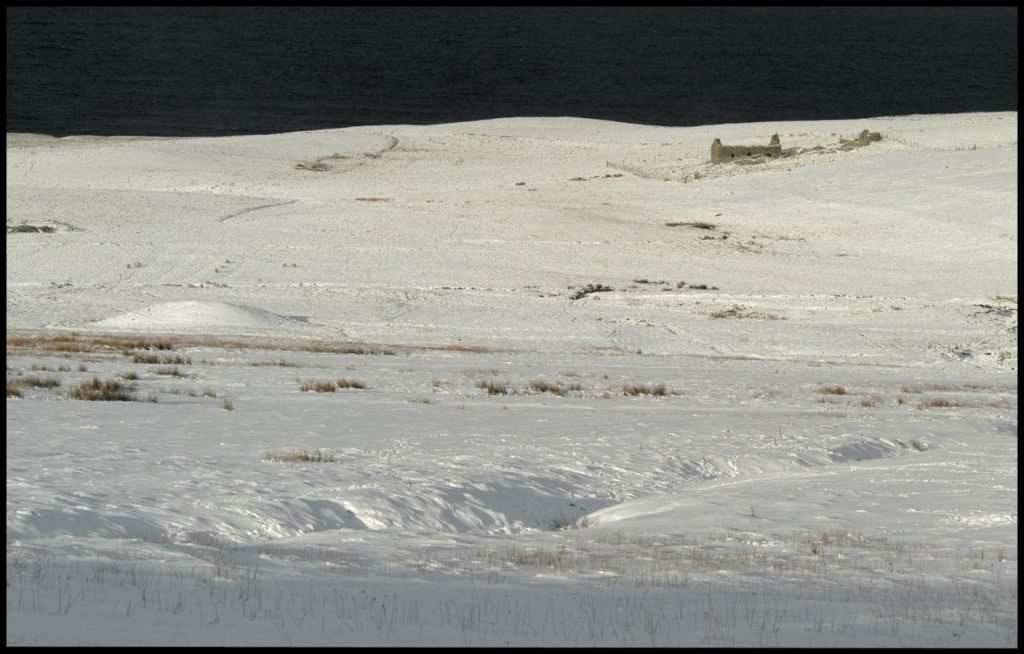
Conflict came with the visit of the Royal Commission whose findings were to lead to the Crofters Act. Burroughs evicted those tenants who gave evidence to the Commission, and with tensions running high a gunboat was sent to keep the peace.
Burroughs would have driven every crofter from his estate had the Crofters Act prevented him from doing so, the crofters having challenged the laird’s right to control the social and economic life of the island.
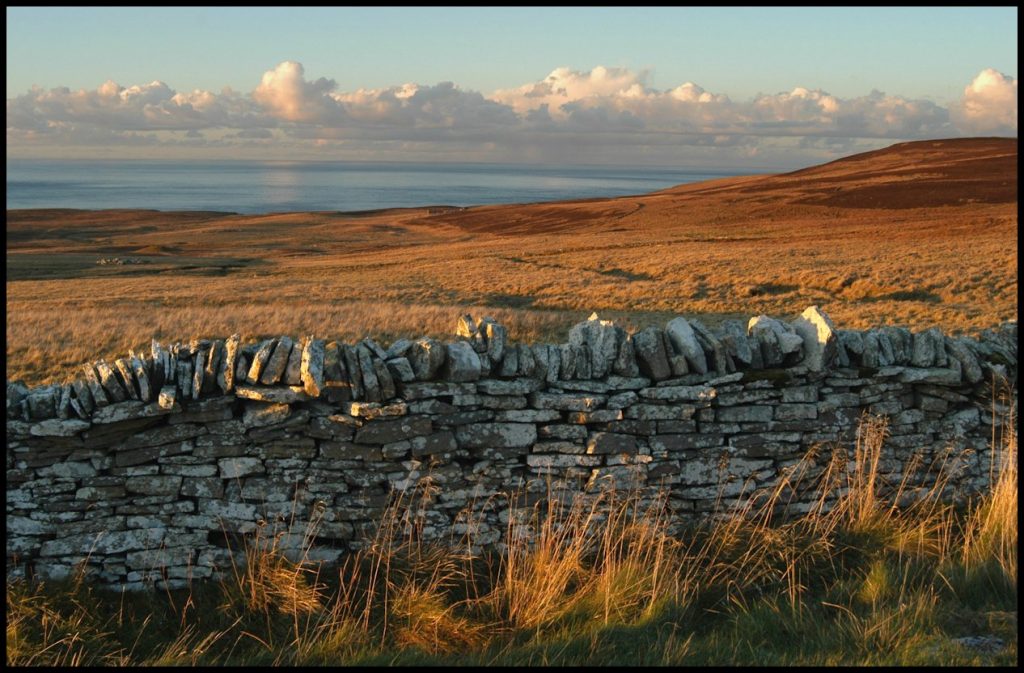
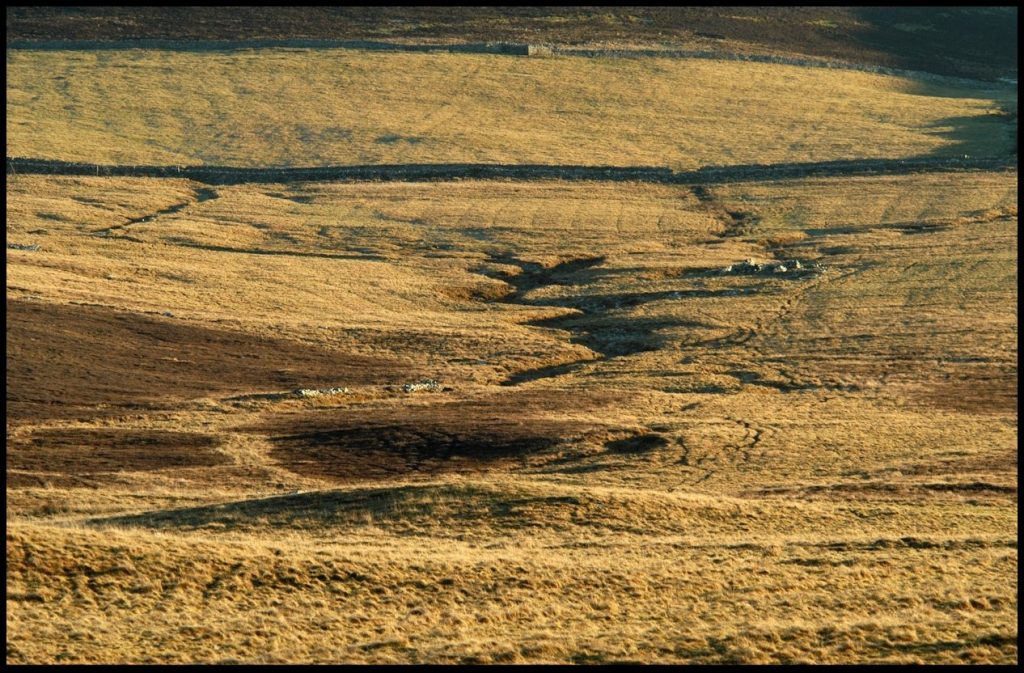
When Burroughs arrived to make his home in Rousay, John Gibson of Langskaill, as tenant of the largest farm, said, in his speech of welcome, “No connection between man and man ought to be more carefully guarded than that betwixt landlord and tenant…..” It was exactly this relationship which went disastrously wrong in Rousay.
Even after 35 years’ residence in Rousay, Burroughs remained a curiously alien figure. He might have owned the island but he never belonged to it. Ownership was important to him, but he had originally wanted more than that. Part of his ideal had been to settle into the community and become part of it. Money could buy ownership, but belonging – that close identification with a place and its people – was a more difficult matter. It was ownership and the gulf it created between laird and tenant, which made belonging impossible.
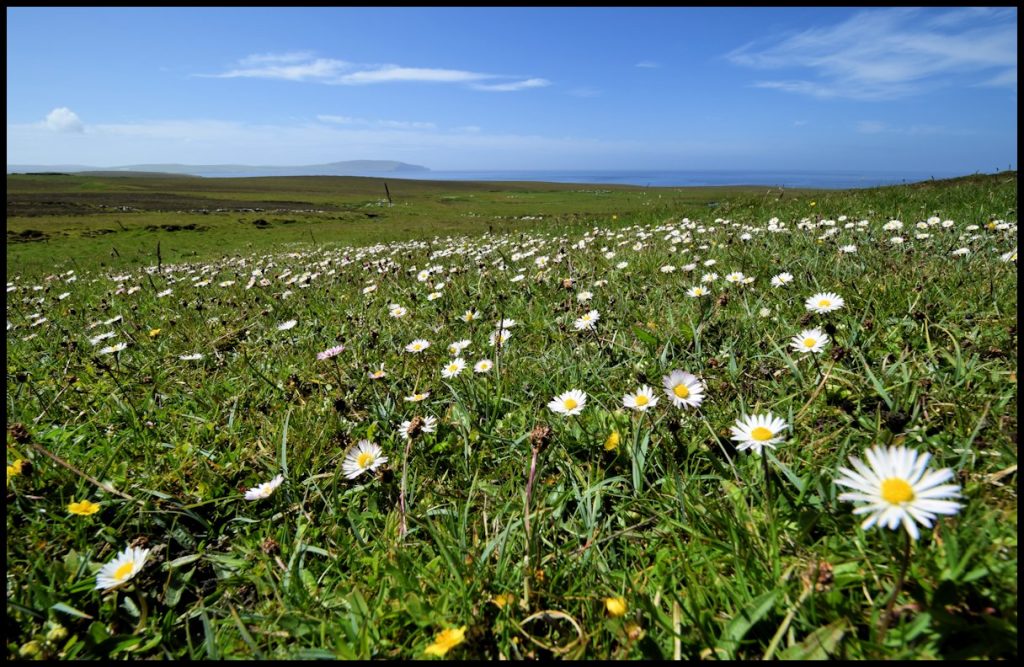
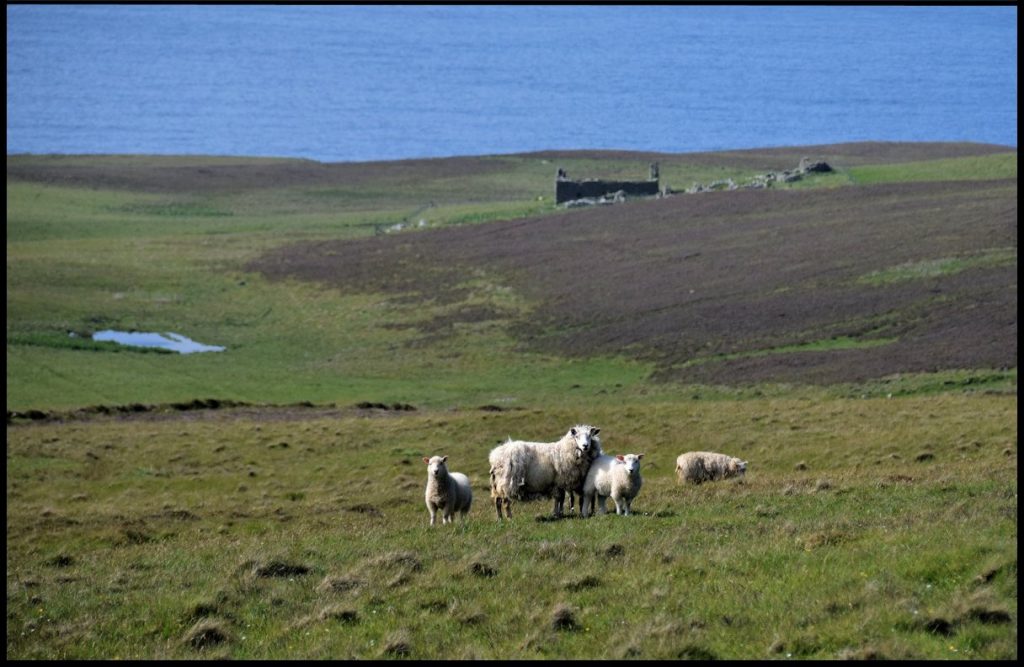
Today in Quandale the pattern of houses and fields can still be seen and shows the complicated system of runrigs previously used to divide up the land, a broad and bare semi-circular depression facing the open sea. In westerly gales the full force of the Atlantic breaks along a line of low cliffs and sheets of salt spray are carried hundreds of yards inland; the crofters of old often complaining that their corn suffered badly from ‘sea gust.’ This deserted community is now home for some of Rousay’s most rare and beautiful flowers and birds.
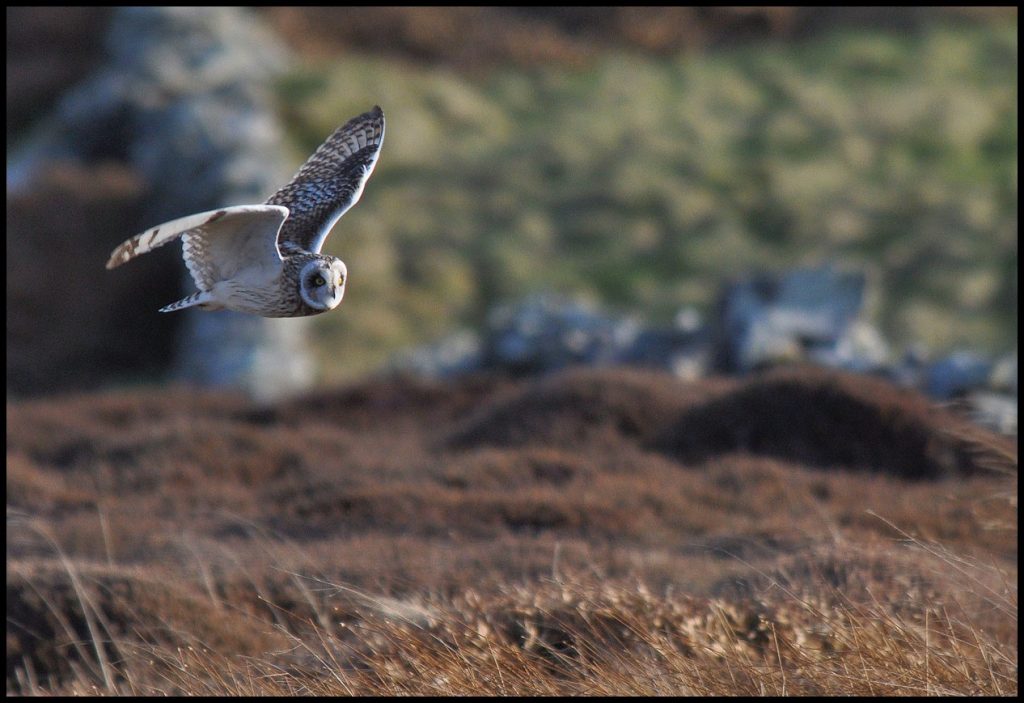
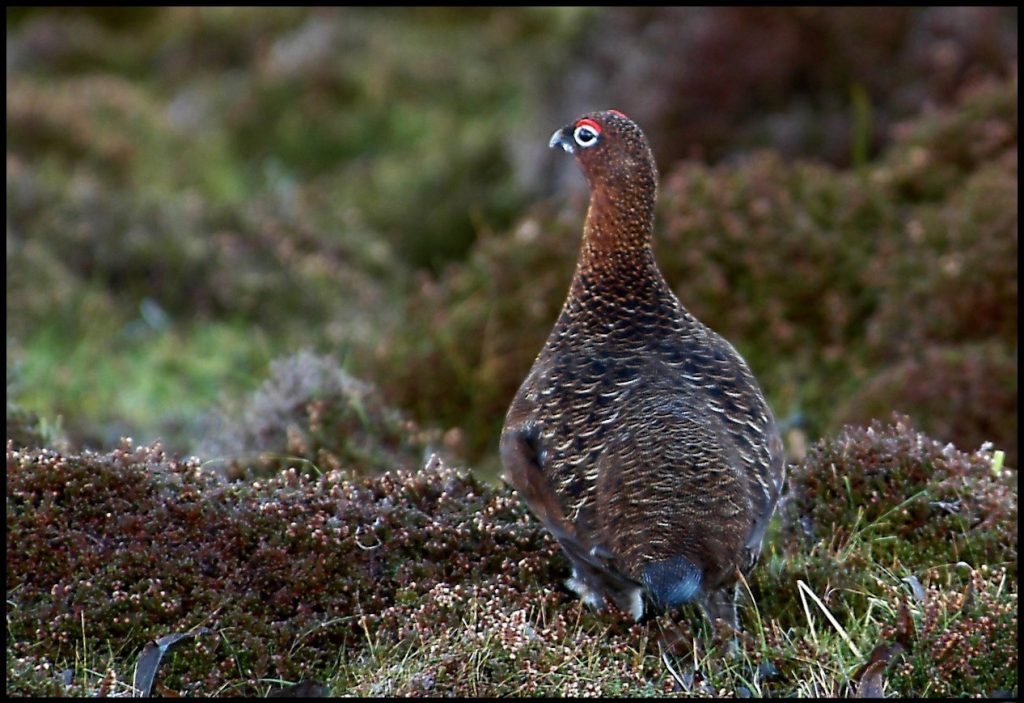

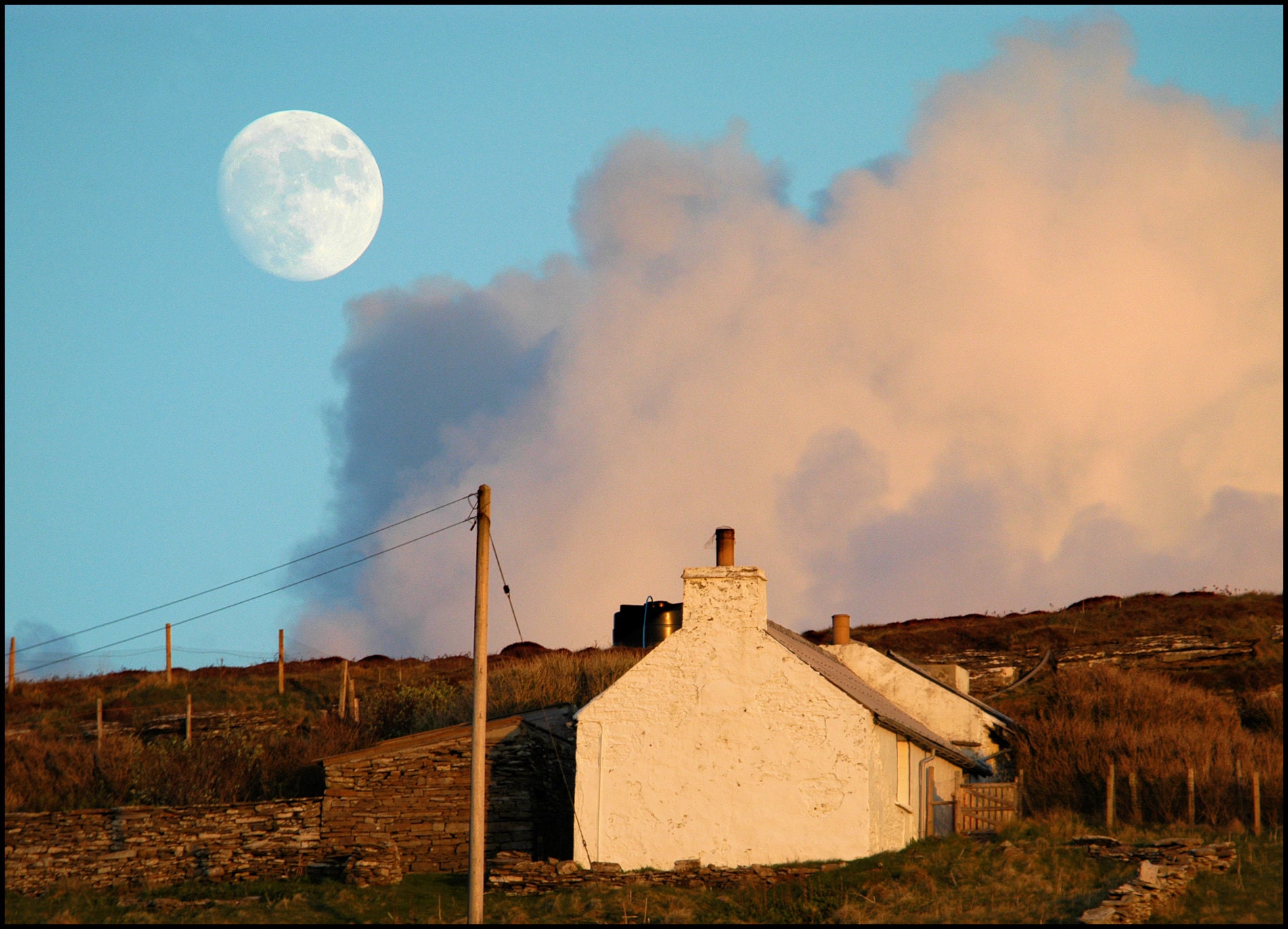
Blackhammer is a croft high up on the hillside in Wasbister. In 1851 it was occupied by Henry Craigie and his family. Henry, born c.1798, was the second son of Hugh Craigie and Janet Marwick of Quoygray. In 1815 he married 19-year-old Mary Craigie of Saviskaill. The 1851 census describes Henry as a 73-year-old pauper, formerly a farmer. Living with him and his wife were two of their children, 29-year-old son James, who worked as an agricultural labourer and fisherman, and 24-year-old daughter Betsy, who also worked on the land. The annual rent was 10s.
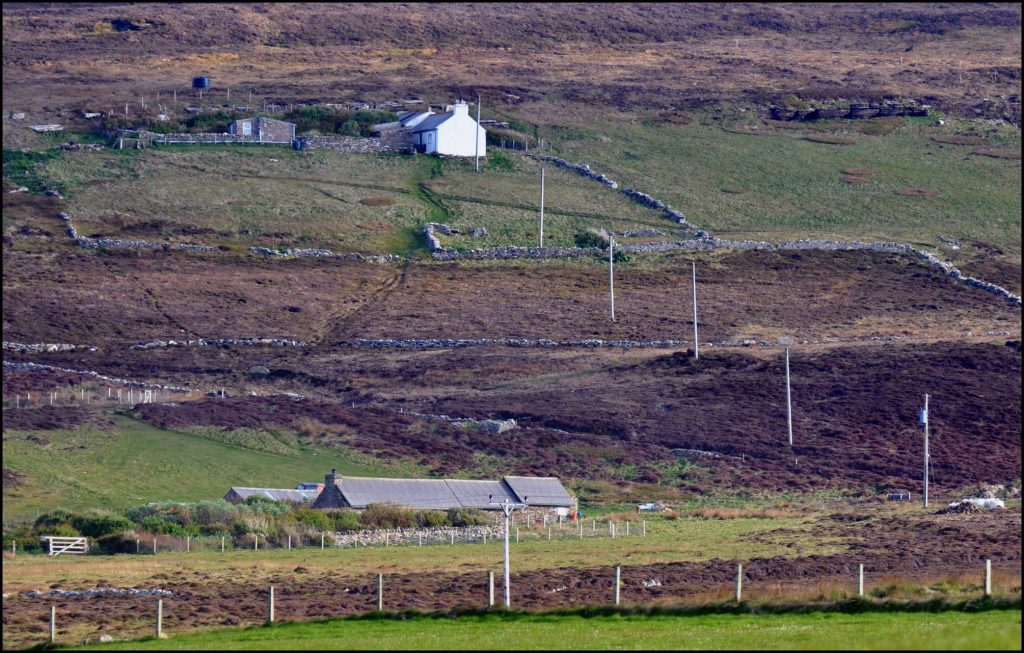
Living at this time in Lower Blackhammer, later called the Manse, was the Louttit family, 72-year-old stonemason Alexander, his wife, 55-year-old Janet Craigie, 28-year-old son Edward, and 15-year-old daughter Betsy, both of whom were agricultural labourers. Edward Louttit was expelled from Rousay by the laird for taking seagull eggs from the Lobust. He went to live in Stronsay.
Further down the hill at Kirkgate was the Pearson family. James Pearson and Mary Leonard were a 40-year-old couple with seven children.
The census of 1871 reveals that Henry Craigie had died and the head of the Blackhammer household was his youngest son John, born on January 2nd1837. John’s mother Mary was now in her 78th year, and his sister Betsy, 44-years-old and still unmarried, was housekeeper, while he himself was a fisherman. In 1873 John paid an annual rent of £1 10s. for the 12.2 acres of land at Blackhammer.
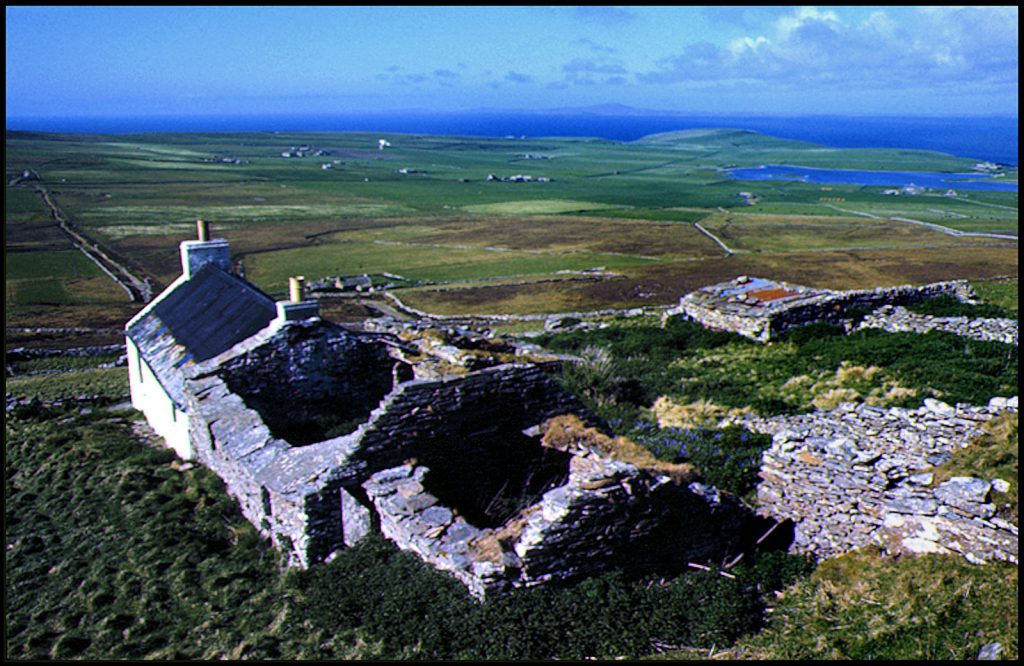
Lower Blackhammer was still occupied by Alexander Louttit, then 95-years-old and described as a farmer of six acres, and his wife Janet, who was then 76. Daughter Barbara, 42-years-old and unmarried, was employed as an agricultural labourer, and her illegitimate 18-year-old son William Louttit, earned money as an apprentice shoemaker. In 1873 the extent of the land at the Manse covered 15.3 acres, for which Barbara Louttit paid an annual rent of £1.
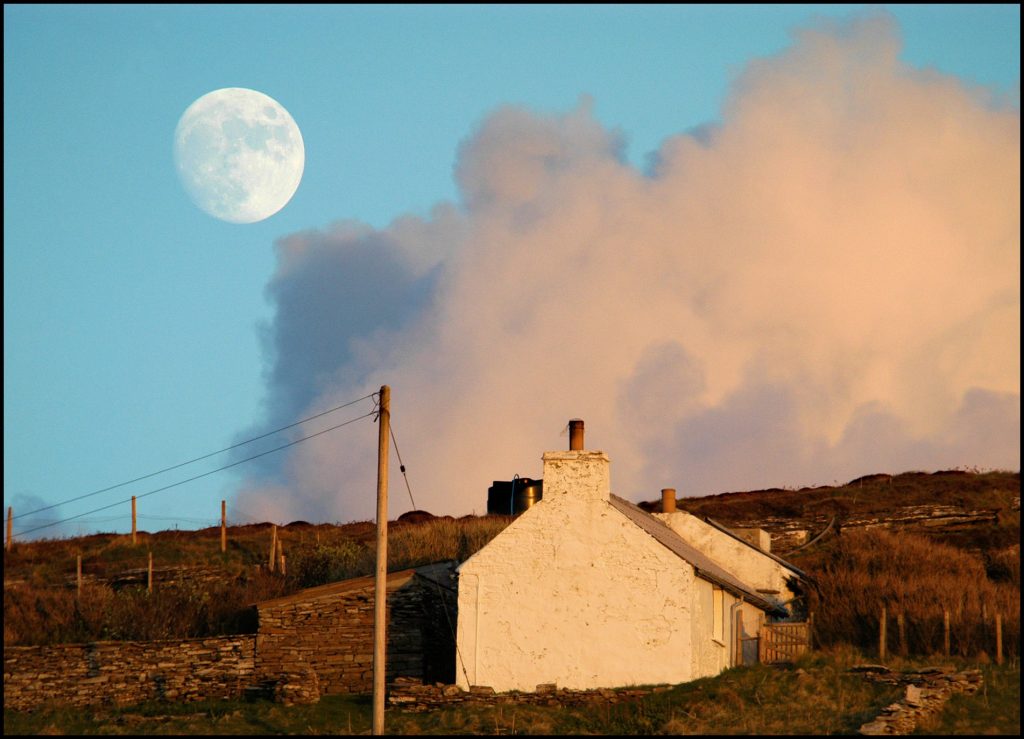
Mary Craigie, a 52-year-old widow, lived at Upper Kirkgate at this time and earned a living as a stocking knitter.
In 1891, John Craigie still lived at Blackhammer, his mother Mary having died there in 1873. John married Mary Sinclair in 1883 and they had two children; Mary, born on October 26th 1884, and Jemima Janet, born on May 27th 1886. Mary Sinclair was the daughter of Peter Sinclair and Janet Louttit of Deerness, and she was born in 1846. On November 18th 1869 she had a son, James Robertson, whose father was James Robertson, a servant at Scockness. On October 17th 1872 she had a daughter, Alexina Louttit Sinclair. Alexina lived at Blackhammer and before she was married she had a son, James Craigie Inkster Sinclair, born on October 19th 1904. She later married the father, David Pearson Inkster, a blacksmith, and they went to Canada taking James Sinclair with them. By that time he was known as James Inkster, but he died in 1915. They had two other children in Hamilton, Ontario, John William, born on March 18th 1915, and Mary Margaret, born on February 4th 1917.
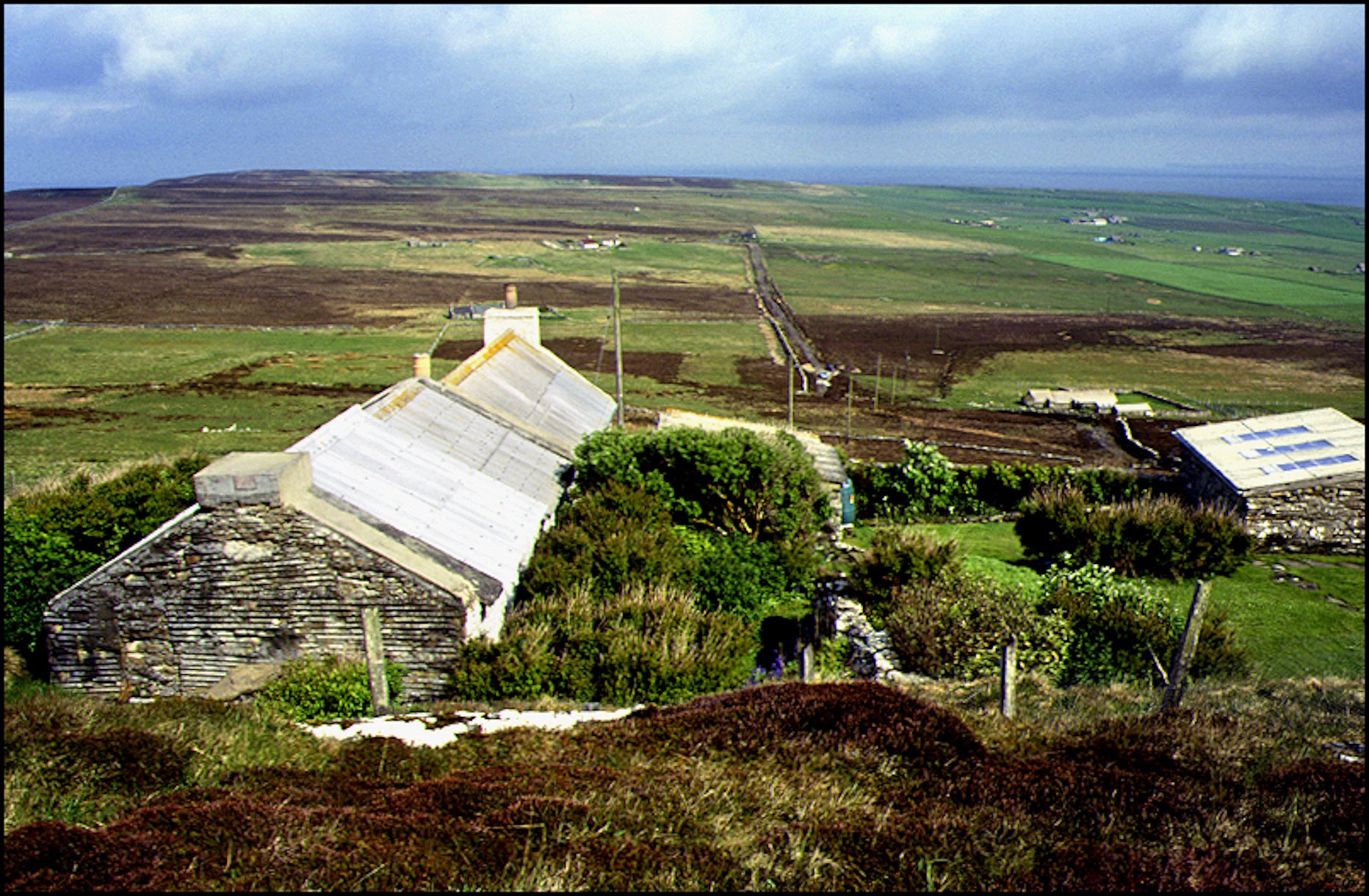

At Lower Blackhammer, then called the Manse, Alexander and Janet Louttit had passed away, but their daughter Barbara still lived there, now 65 years old and described as a ‘small farmer.’ Also at the Manse was 37-year-old washerwoman Margaret Gibson, widow of William Louttit of Maybank, Wasbister, who had passed away in 1884. She was known as Maggie o’ Maybank and they had three children, Maggie Jessie, born in 1877, Isabella, born in 1878, and William, born in 1882.
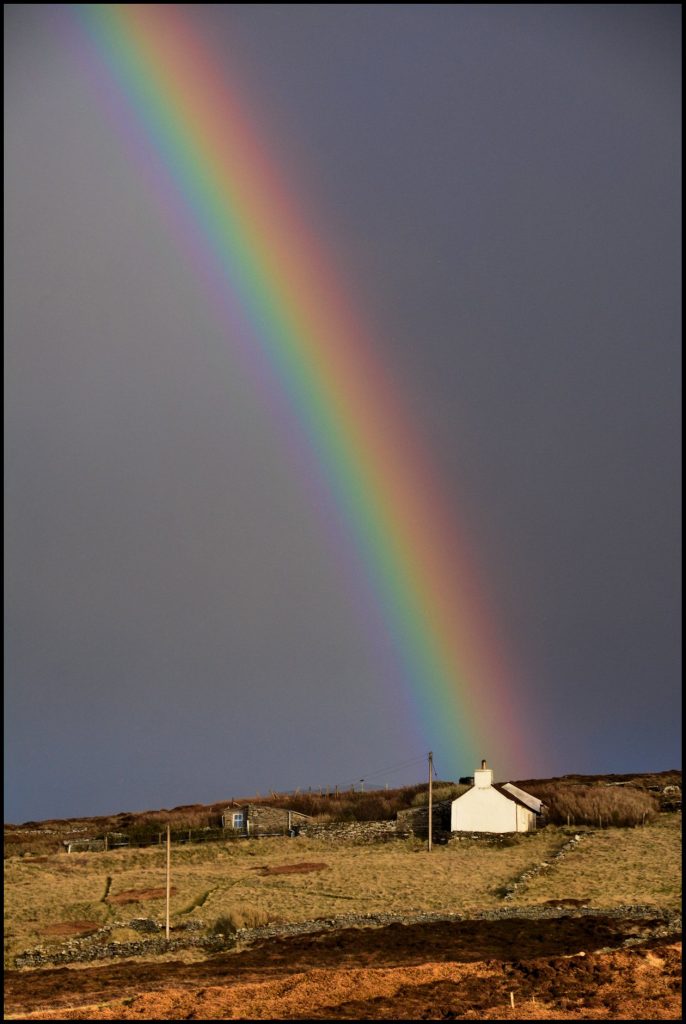
In later years Blackhammer’s notoriety spread far and wide, for when occupant Maggie Watson decided to leave Rousay her nearest neighbour Jim o’ Deithe composed a polka to record the event. The tune is performed to this day by many Orcadian musicians – Maggie Watson’s Farewell to Blackhammer.
A list of ‘vanished’ houses in Rousay
compiled by Tommy Gibson
WASBISTER [Wester, Wesder]
| Hammer | below Innister |
| Gorn | W. of Hammer |
| Hammergorn | ? |
| Mully | ? |
| Meron Meeron | below Falquoy |
| Neager | ditto |
| Lows House | ditto |
| Lerquoy | ? |
| Maybank | front of School |
| Brokisland | on Saviskaill |
| Bucket | ? |
| Batycras | E. side Head of Saviskaill |
| Gruthin Grithin | N.W. Head of Saviskaill |
| Sacquoy | W. of Headland |
| Rigersland | ? |
| Bare Braes | above Cogar |
| Cornquoy | ? |
| Easter Lee | S.E. Langskaill |
| Upper Lee | The Leean |
| Flotty | above Langskaill |
| Gateside | ? |
| Gue, Goo, Upper | above Turbitail |
| Heather Hall | ? |
| Hillhouse | ? |
| Howatoft | near Saviskaill |
| Nuggle | W. Wester Hill |
| Stack Back | ? |
| Fealha | ? |
| Knockhall | ? |
| Quoytarsabreck | ? |
| South Neagar | ? |
| Powie | near White Meadows |
| Toisterburn | ? |
| Newark | ? |
| Quoy Garson | ? |
| Nether Breckan | ? |
| Housequoy | ? |
| Oot o the Toon | ? |
| Grudwik | ? |
| Larksquoy | ? |
| Tercabreeck | ? |
| Lower Brigaday | E. of the Loch |
| Upper Brigaday | above road |
FROTOFT [Frotet, Froted] and BRINIAN [Brinzian]
| Old Banks | site of Yorville |
| Newark | near Cruseday |
| Cluik | near Yorville |
| Cathole | above Nears |
| Geramount | above Nears |
| Manners | above Nears |
| Quoyjenny | above Hunclett |
| Richishaw | ? |
| Ladyhammer | near Pier Cottage |
| Blackhammer Cott. | ? |
| Topsquare | ? |
| Myre | East of Nears |
| Dishans | in yard of Trumland Farm |
| Cott Mowat, Commode | East of Brinian House |
| Cott | below Seaview |
| Brenion | North-West of Brinian House |
| Houseteith | ? |
| Squarehall | ? |
| Salthouse | ? |
| New Grindly | ? |
SOURIN
| Windbreck | East of Clumpy |
| Shorehouse | Between Co-op Stable and Woo |
| Milnhouse | Between school and Woo |
| Heatherhouse | ? |
| Upper Gripps | West of Curquoy |
| Upper Swartifield | Below the Blossan |
| Mid Swartifield | ? |
| Husabae | Below Essaquoy |
| Queenamugle | Below Fa’doon |
| Eastafea | on Faraclett |
| Midfea or Mithvie | on Faraclett |
| Peeno | near Hanover |
| Wallhouse | near Knarston |
| Quadraa | near Faroe |
| Mill Brae | above Sourin mill |
| Skoan | on land of Knarston near Gorehouse |
| Scarabreck | on Faraclett between Mithvie and Eastfea |
| Windiwaa | ? |
| Castle by North | ? |
| Grind Braik | near Kingarly |
| Lower Gripps | below Upper Gripps |
| Feelyha | near Cruannie |
| Lower Breck | near Leenburn |
| Graihill | ? |
| Old Man o Kinga | ? |
| Crook | ? |
| Midland Midgarth | ? |
| Neuks | near Hanover |
| Brigsend | ? |
| Greysteen | below Midgarth |
| Larkquoy | ? |
| Hillside (Boggle Ha) | West of Curquoy |
| Grindy | ? |
| Geroyne | near the Old School |
| The Bungalow | above Avelsay |
| Lower Classyquoy | at the road of Springfield |
| Brekan | top field north side of the road Avelsay |
